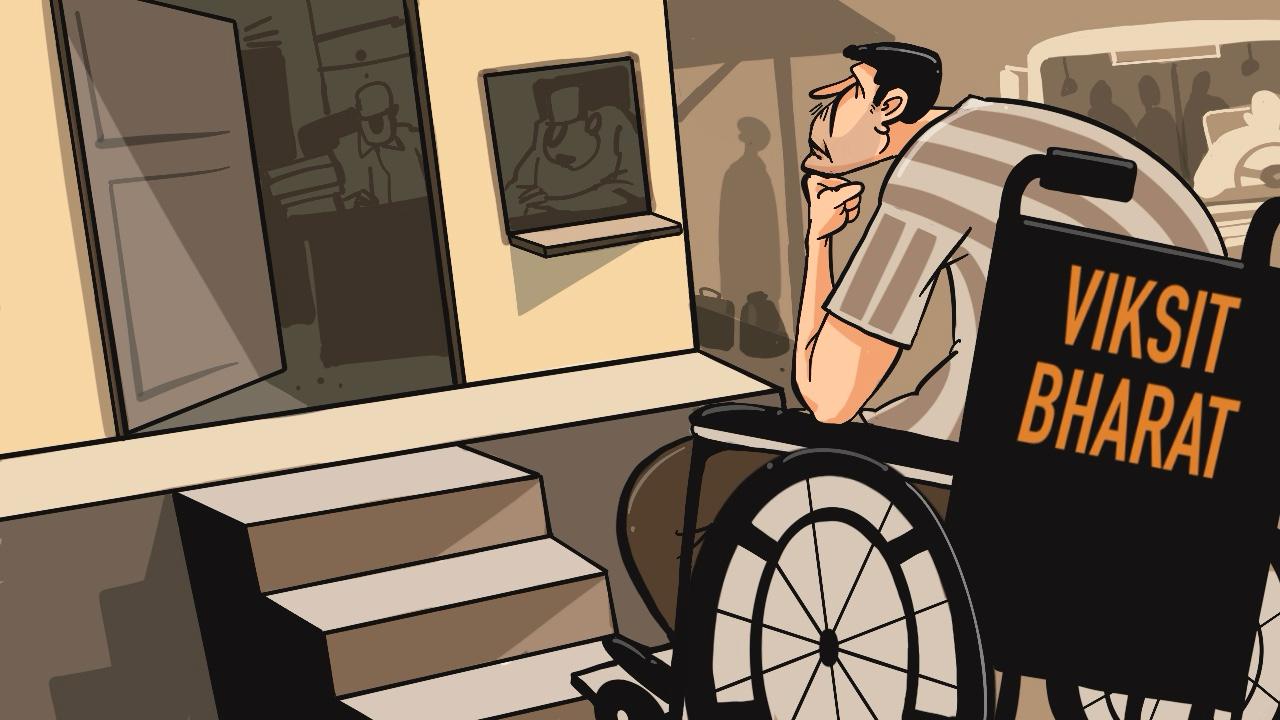Inclusivity is not charity. It is the fundamental right of every citizen in a modern, democratic society.
Published Nov 15, 2025 | 11:33 AM ⚊ Updated Nov 15, 2025 | 11:33 AM

Progress cannot be measured by skyscrapers or GDP alone. It must be measured by who gets included in the journey. Inclusivity is a fundamental right every citizen should be able to claim.
Synopsis: The latest data from Unified District Information System for Education Data (UDISE), 2022, shows that only 61% of children with disabilities between the ages of five and 19 are in school. Many drop out after the primary level. And the reasons are painfully obvious: no sign language interpreters, scarce Braille books, and inaccessible online platforms.
I remember an incident that was shared with me recently. Anjali (name changed), a young woman with a first-class degree in Economics, set out for what could have been a life-changing interview at a government-backed financial institution in Mumbai. She battled traffic, rehearsed answers in her mind, and held onto the hope that her hard work would open new doors.
Those doors never opened. At the building’s entrance, a flight of stairs stood in her way. The elevator was out of order, there was no ramp, and no one around could help beyond a shrug of helplessness. For Anjali, who uses a wheelchair, the interview ended before it even began.
Her experience is not rare. It is the reality for over 3.5 crore Indians with disabilities. And each time I hear such stories, I am reminded that progress cannot be measured by skyscrapers or GDP alone. It must be measured by who gets included in the journey. For me, inclusivity is not charity. It is a fundamental right every citizen should be able to claim.
Nearly 10 years have passed since the Accessible India Campaign was launched. Yet, most government buildings—seven out of ten by some counts—remain inaccessible.
The Indian Railways, which connect our nation, has also shut out millions. Less than 40% of stations have ramps or wheelchair-friendly toilets. For someone with a disability, what should be a simple train ride often becomes a struggle, cutting them off from school, work, or even family visits.
If we dream of Viksit Bharat @2047, then we cannot ignore the 2.2% of our population living with disabilities. Their right to basic mobility and access must be central to that vision.
The World Bank says only 34% of Indians with disabilities are employed. I think about the lost potential behind that number—millions of people with ideas, skills, and energy who are kept on the sidelines. This is not just a personal loss for them; it is a national loss for all of us.
The exclusion begins early. Education should have been the great leveller, but it often turns into the first barrier.
The latest data from Unified District Information System for Education Data (UDISE), 2022, shows that only 61% of children with disabilities between the ages of five and 19 are in school. Many drop out after primary level. And the reasons are painfully obvious: no sign language interpreters, scarce Braille books, and inaccessible online platforms.
These are not insurmountable challenges—they are oversights we can correct, if we choose to.
I do not say this to cast everything in a negative light. Many examples give me hope. The Delhi Metro, with its tactile flooring, audio announcements, and accessible lifts, shows us how to design with everyone in mind. The Kochi Metro goes further, creating jobs for transgender persons while also ensuring physical accessibility.
In Kerala, under the Samagra Shiksha Abhiyan, visually impaired students are now using screen-reading software that lets them study from the same textbooks as their peers in real time. Whenever I come across such initiatives, I feel reassured that inclusion is not a dream—it is within reach when empathy and intent drive design.
The government has also taken important steps through schemes that provide financial support, healthcare, and reservations in education and jobs. NGOs have played a critical role too, offering training, rehabilitation, and platforms where persons with disabilities showcase their talent in art, sports, and culture. Technology and social media, in their own way, are also breaking barriers and opening new spaces for visibility and connection.
But what we need now is not isolated efforts. Accessibility should not be treated as an afterthought or a “special” addition. It has to become the norm. Every new public project must go through accessibility audits, and universal design principles must be built into every Smart City and infrastructure plan.
As India moves towards 2047, we often speak of development in terms of roads, bridges, and industries. But I believe the truest measure of development is dignity. Can every citizen walk into a school, a railway station, or an office with equal ease? Can every child, regardless of ability, stay in school long enough to dream big?
I will not consider India truly developed until people like Anjali can walk into an interview room without a second thought about stairs or ramps, until they are judged only by their talent and effort.
For me, an inclusive India is not about extending kindness to those on the margins. It is about recognizing that they were always meant to be part of the mainstream. That, to me, is the India worth building—an India made for everyone.
(Views are personal. Edited by Majnu Babu).
